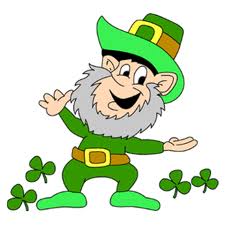UNDERSTANDING THE POEM

KENNINGS
üa KENNING is a specialized metaphor made of compound words
üthe earliest and simplest kennings are compound words formed of two common nouns e.g. “sky- candle”- sun; “battle-dew”- blood; “whale-road”- sea
ülater kennings grew more elaborate and compound adjectives joined the compound nouns e.g. A ship became a “foamy-throated ship”, then a “foamy-throated sea-stallion” and finally a “foamy-throated stallion of the whale-road”.
üOnce a kenning had been coined, it was used by the bards over and over again
Kennings performed three functions:
(a) since old Norse and Anglo-Saxon poetry depended heavily on alliteration but did not have a
large vocabulary, the bards created alliterative words they needed by combining
existing words.
(b) since poetry was oral and not written, and had to be memorized, bards valued ready-made
phrases. These phrases made finished poetry easier to remember and gave the bard time to
think ahead when he was composing new poetry on the spot during a feast or ceremony.
(c) kennings became elaborate and increased people’s taste for them bygiving life to inanimate
objects
üa KENNING is a specialized metaphor made of compound words
üthe earliest and simplest kennings are compound words formed of two common nouns e.g. “sky- candle”- sun; “battle-dew”- blood; “whale-road”- sea
ülater kennings grew more elaborate and compound adjectives joined the compound nouns e.g. A ship became a “foamy-throated ship”, then a “foamy-throated sea-stallion” and finally a “foamy-throated stallion of the whale-road”.
üOnce a kenning had been coined, it was used by the bards over and over again
Kennings performed three functions:
(a) since old Norse and Anglo-Saxon poetry depended heavily on alliteration but did not have a
large vocabulary, the bards created alliterative words they needed by combining
existing words.
(b) since poetry was oral and not written, and had to be memorized, bards valued ready-made
phrases. These phrases made finished poetry easier to remember and gave the bard time to
think ahead when he was composing new poetry on the spot during a feast or ceremony.
(c) kennings became elaborate and increased people’s taste for them bygiving life to inanimate
objects
STRUCTURE OF THE POEM
ü“Beowulf” is divided into three main parts, each of which centres on the Beowulf’s struggle against a particular monster- first Grendel, then Grendel’s mother and then the dragon.
üIn Beowulf’s bloody battle against Grendel, the first art of the story reaches the climax
üthe storyteller relates much of the battle from Grendel’s perspective rather than from Beowulf’s.
By doing this he manages to emphasize the pain and fear Beowulf inflicts upon the demon
üThis narrative technique makes Beowulf seem more godlike, seemingly an unstoppable heroic
force.
üthroughout the fight, Beowulf is treated as more than human, showing himself stronger and more powerful than the monstrous Grendel, quite invulnerable.
üSince Grendel is described as a demon, a fiend, spirit and stranger. In the Middle Ages the word “monster” was used to describe birth defects. Grendel is later referred to as “an unnatural birth”. He seems to be a horrific beast, a large and distorted creature of vaguely human shape.
üGrendel’s supernatural monstrousness makes Beowulf’s conquest of him even more impressive.
üIn Beowulf’s bloody battle against Grendel, the first art of the story reaches the climax
üthe storyteller relates much of the battle from Grendel’s perspective rather than from Beowulf’s.
By doing this he manages to emphasize the pain and fear Beowulf inflicts upon the demon
üThis narrative technique makes Beowulf seem more godlike, seemingly an unstoppable heroic
force.
üthroughout the fight, Beowulf is treated as more than human, showing himself stronger and more powerful than the monstrous Grendel, quite invulnerable.
üSince Grendel is described as a demon, a fiend, spirit and stranger. In the Middle Ages the word “monster” was used to describe birth defects. Grendel is later referred to as “an unnatural birth”. He seems to be a horrific beast, a large and distorted creature of vaguely human shape.
üGrendel’s supernatural monstrousness makes Beowulf’s conquest of him even more impressive.
